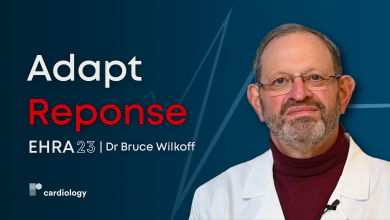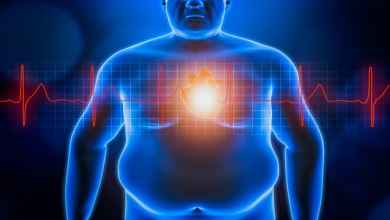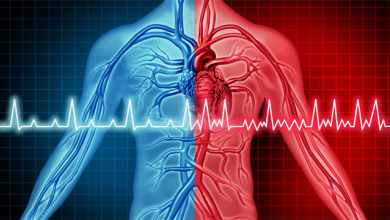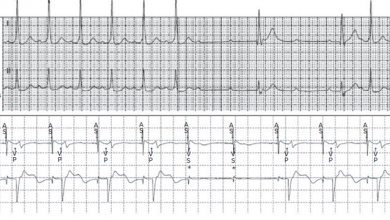Search results
Author(s):
Bruce Wilkoff
Added:
1 year ago
EHRA 23– Dr Bruce Wilkoff (Cleveland Clinic, US) joins us on-site to outline the findings of the AdaptResponse randomized study (NCT02205359).
In AdaptResponse, investigators studied the hypothesis that cardiac resynchronization therapy (CRT) devices which utilised AdaptivCRT® (aCRT) algorithm (Medtronic) had better prognosis in patients with normal atrioventricular conduction and left bundle…
View more
Author(s):
Rajdip Dulai
,
Fatima Bangash
,
Ajay Sharma
,
et al
Added:
4 months ago
Author(s):
George Thomas
,
Jiwon Kim
,
Bruce B Lerman
Added:
3 years ago
CRT is an essential treatment for patients with heart failure and reduced ejection fraction as it can restore left ventricular (LV) electrical and mechanical synchrony. It has been shown to increase quality of life, improve functional status, reduce hospitalisation, improve LV systolic function and reduce mortality in properly selected patients.1,2 While CRT is an effective therapy, approximately…
View more
Author(s):
Irina Suman-Horduna
,
Sonya Babu-Narayan
,
Sabine Ernst
Added:
3 years ago
Catheter ablation has moved from ablation of ‘simple’ substrates like accessory pathways,1 atrioventricular nodal re-entrant tachycardias (AVNRTs)2 and re-entrant or focal tachycardia (of either ventricular or atrial origin)3–5 in recent years to more complex arrhythmias such as atrial or ventricular tachycardia (VT) or fibrillation.6–8 Even patients with complex congenital heart disease that may…
View more
Unmasking Adenosine
Author(s):
Gareth DK Matthews
,
Andrew Grace
Added:
3 years ago
Article
Author(s):
Mathieu Lebloa
,
Patrizio Pascale
Added:
1 year ago
Author(s):
Khang-Li Looi
,
Anthony SL Tang
,
Sharad Agarwal
Added:
3 years ago
Heart failure (HF) is a growing and major health burden in western countries. The prevalence of HF is estimated at 1–2 % in the western world, and the incidence approaches 5–10 per 1,000 persons per year.1Cardiac resynchronisation therapy (CRT) has been shown in multiplestudies to improve HF symptoms, quality of life and improve survivals.2–6The two landmark studies, Comparison of Medical Therapy…
View more
Author(s):
Andrew Grace
,
Gregory YH Lip
,
Pier D Lambiase
,
et al
Added:
1 month ago
Author(s):
Francisco G Cosio
Added:
3 years ago
The term ‘flutter’ was coined to designate the visual and tactile rapid, regular atrial contraction induced by faradic stimulation in animal hearts, in contrast with irregular, vermiform contraction in atrial fibrillation (AF).1,2 On the ECG, flutter was a regular continuous undulation between QRS complexes at a cycle length (CL) of ≤250 ms (≥240 bpm). Slower tachycardias displaying discrete P…
View more
Author(s):
Elise Bakelants
,
Haran Burri
Added:
2 years ago
















 « First
« First